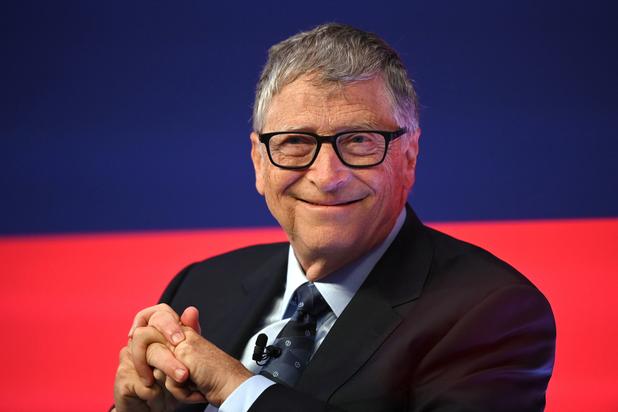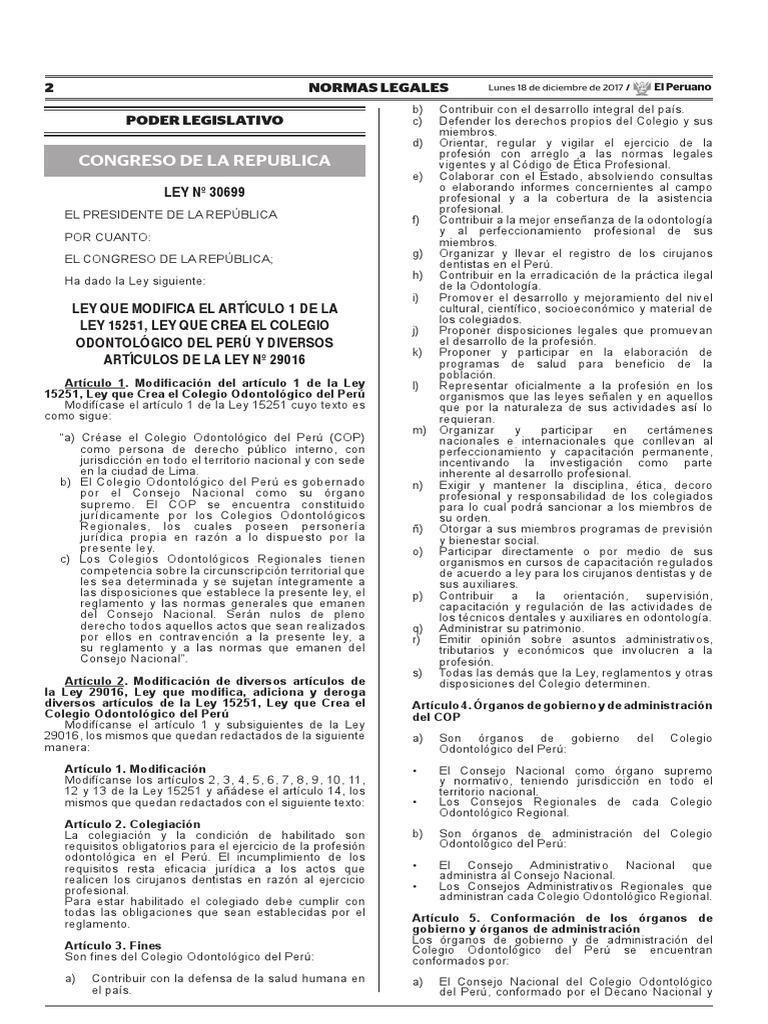Bill Gates' monumental letter: divorce with Melinda, "empty nest" and future of humanity
Here is the full letter that Bill Gates posted on his personal blog:
When Paul and I founded Microsoft, we had a vision that personal computers would one day play an important role in people's lives. But I don't think any of us envisioned a future where they would be your only connection to the world. Like many people, there were whole days this year where the only human interaction I had was through a screen.
The result has been the most unusual and difficult year of my life. (I suspect many of the people reading this might say the same.) 2020 had a brief period of relative normalcy before COVID-19 turned everything upside down. In 2021, the pandemic has dominated our lives from day one. We've all had to adjust to a “new normal, though what that looks like is different for everyone. For me, the result has been a year spent mostly online.
I had periods of time without any face-to-face social interaction. If I had a break between meetings, I would walk through my garden to see something different. After work, I would play bridge with friends online or go out with them via video chat. Once I got vaccinated, I started having a few small in-person meetings, but my social life is still much more digital than before.
It has been a strange and disorienting experience. My personal world has never felt smaller than in the last twelve months.
At the same time, this year was a reminder that our world is more connected than ever. The year 2021 was filled with monumental events with global repercussions, including extreme weather events, the ongoing effects of the pandemic, and the withdrawal of the United States from Afghanistan< /b>. Every time you watched the news, you were reminded of how much something happening on the other side of the world could affect you back home. (Just look at how a container ship stuck in the Suez Canal for a week caused shipping delays around the world.) It has never been clearer that solving big problems requires people to work together across borders and across sectors.
Collaboration has been a constant in my work this year. The foundation continues to take up most of my time, and I am impressed by the incredible progress our team and partners have made in 2021. Most weeks, we have a virtual meeting with everyone working on our response to the COVID. Each meeting focuses on a different topic, such as disease modeling or vaccine distribution. It is inspiring to hear how the groups are working together to find solutions.
While COVID-19 has been a big focus, the foundation continues to make progress in other areas. Our United States Program is working with partners to help students and teachers navigate the strange new world of education in the era of the pandemic, and my colleagues working on gender equality are fighting for a more equal global recovery. Global health and development teams have found creative ways to protect advances in diseases like polio, tuberculosis, and HIV, and to continue making progress in reducing child mortality. (This year's Goalkeepers Report describes how the pandemic hasn't set us back as far as feared.)
One of the most exciting things that has happened is the WHO approval of the first malaria vaccine. Malaria kills nearly 650,000 people each year - more than half of them children under the age of five - and remains a leading cause of death in low-income countries. Between 2001 and 2015 we financed the clinical development of the vaccine in its last phase and we continue to support research to optimize its efficacy. This new vaccine is providing us with information on how to develop second generation vaccines and preventive tools that can be used at all ages, are even more effective and can help us reach the goal of eradication.
This year has also been the start of a new chapter in my climate work. I have published my book Avoiding a Climate Disaster and launched the Breakthrough Energy Catalyst and Fellows programs to support the financing, production and purchase of new clean energy technologies. The reason I felt confident enough to scale our efforts so significantly was the incredible progress I've seen at Breakthrough Energy Ventures, where we are now supporting over 70 amazing companies.
I have been working on climate and energy issues for a long time, but in the last twelve months this area has become a bigger part of my focus. I have also found time to work in some non-foundation and climate related areas, such as Alzheimer's research and expanding free educational resources for teachers.
While I think the things I've been working on are by far the most interesting of my year, I know a lot of people are curious about a closer topic: my < b>divorcedo. Melinda and I continue to run our foundation together and have found a good new rhythm of work, but I cannot deny that it has been a year of great personal sadness for me . Adapting to change is never easy, whatever it is. I have been impressed with how resilient my loved ones - especially my children - have been in this difficult time.
My family has also experienced many changes beyond what you probably saw on the news. My oldest daughter, Jenn, got married this fall, and her wedding was the highlight of my year. Our youngest daughter, Phoebe, graduated from high school and went off to college. Since my son Rory is also in school, that means I officially have an empty nester. The house is much quieter without a bunch of teenagers hanging around all the time. I miss having them at home, even though these days it's easier to focus on reading a book or doing work.
2021 has been a year of great transitions for me, but the reason I love the work I do hasn't changed. Now that it's almost over, I wanted to sit down and write about four things on my mind for 2022: the latest developments towards ending the COVID-19 pandemic, why the decline in trust in institutions could be the biggest obstacle standing in our way, what the climate conversation can teach us about how to move forward, and how rapid digitization brought on by the pandemic will shape our future.
In my previous year-end post, I wrote that I thought we could look back and say that 2021 was an improvement on 2020. Though I think that's true in some ways - millions of people have been vaccinated against COVID-19, and the world is somewhat closer to normal - the improvement has not been as dramatic as I had hoped. In 2021 more people died from COVID than in 2020. If you are one of the millions of people who have lost a loved one to the virus in the last twelve months, you probably do not think that this year has been better than the last.
Due to the Delta variant and the challenges of vaccine acceptance, we are not as close to the end of the pandemic as I had hoped at this point. I did not foresee such a highly transmissible variant appearing, and I underestimated how difficult it would be to convince people to get vaccinated and continue to wear masks.
However, I am hopeful that the end is in sight. It may be silly to make another prediction, but I think the acute phase of the pandemic will come to an end sometime in 2022.
There is no doubt that the Omicron variant is worrisome. Researchers - including a network called GIISER that is supported by our foundation - are working urgently to learn more about it, and soon we will have much more information (such as the efficacy of vaccines or previous infection to protect you against it). But here's what we know: the world is better prepared to deal with potentially bad variants than at any point in the pandemic so far. We have detected this variant earlier than we found in Delta because South Africa has invested heavily in sequencing genomics capabilities, and we are in a much better position to create updated vaccines if they are needed. .
It's worrisome every time a worrisome new variant emerges, but I'm still hopeful that sometime next year, COVID-19 will become endemic in most of the world. the places. Although it is currently about 10 times deadlier than the flu, vaccines and antivirals could cut that number in half or more. Communities will still see occasional outbreaks, but there will be new drugs that will be able to deal with most cases and hospitals will be able to deal with the rest. Your individual risk level will be low enough that you do not have to take it into account when making decisions. It will not be paramount when deciding whether to work from the office or let your children go to their soccer game or watch a movie at the cinema. In a couple of years, my hope is that the only time you really have to think about the virus is when you get your COVID outfit and flu shot each fall.
As we begin to near the end of this pandemic, I have spent a lot of time thinking about what went right and what went wrong in the last two years. We can learn important lessons from the global response to COVID-19 that will make us better prepared next time.
Although the pandemic has lasted longer than expected, many things have gone well. For starters, the progress we've made on vaccines is remarkable. The world has never manufactured and distributed a vaccine for a disease as quickly as it did for COVID-19. The fact that we had one - let alone several - vaccines in the first year of the pandemic is miraculous. That success is a tribute to the number of candidates the world had in the pipeline. Vaccine development depends on a bit of luck, and we have taken our chances trying many different approaches.
I think mRNA vaccines will end up being the most important advance of the pandemic. Demonstrating that mRNA works as a vaccine platform has been a game changer, not only for this pandemic, but also for the next one. Now that mRNA is well established, we will be able to develop safe and effective vaccines very quickly in the future.
We've also learned a lot about non-pharmaceutical interventions (or NPIs) that will inform disease response in the future. NPIs include things like mask mandates, quarantine procedures, and travel restrictions. The last two years have given us the opportunity to see the efficacy of different strategies against a respiratory disease such as COVID. Next time around, the world will be prepared to deploy cheap and easy tools like masks much faster, and governments will have a better understanding of when and how to deploy more burdensome strategies like lockdowns.

While stopping a pandemic is ultimately up to systems and governments, the last two years have shown us that individuals can make a real impact. We've seen incredible people from around the world do heroic work to protect their communities: from teachers who took the time to leave class supplies at their students' doors to health workers who went door to door to make sure everyone had the chance to get vaccinated. I wrote another article describing several of these heroes from the African continent. You can read about them here.
One area that has been a mixed bag is therapeutics. Until the last couple of months, I was disappointed with the lack of progress on the treatment front. Remdesivir is expensive and did not have as great an effect. dexamethasone is cheaper and helped a little, but not enough to make a big dent in stopping the disease early. The monoclonal antibodies - which I was quite optimistic about at one point - were too logistically complicated to go out and save so many people in the early stages of the pandemic, and they were not very effective against the variants.
The reason I feel so much better about therapy now is the recent news about two new medications antivirals. This is the therapeutic we needed in 2020. One of them - a drug called Molnupiravir from Merck - just received the FDA seal of approval for high-risk people last week. It significantly reduces the chances of being hospitalized or dying from COVID-19 (although not as much as we initially hoped), it's relatively cheap to make, and it's an easy-to-distribute oral medication.
Earlier this year, before we knew the drug worked, the foundation supported an effort to streamline the production process for molnupiravir in order to reduce costs. Merck is allowing generic manufacturers to make this simplified formulation, which will make the drug accessible to many more people. In addition, we have recently dedicated $120 million to ensure that the drug is available in low-income countries, where it will save many lives. I wish I had arrived earlier.
The area I find most disappointing is the inequality in vaccine allocation. It's something I've written about extensively and I'm going to keep talking about whenever I can, because it didn't have to be that way. The world has done an extraordinary job manufacturing and distributing billions of doses of vaccines, but the fact that so few high-risk people in low-income countries have received them is unacceptable. It doesn't make sense that so many low-risk people got vaccinated before it reached everyone who was older or had an underlying disease. Looking ahead, we need to change the way the world allocates doses and find ways to ramp up manufacturing even faster, including by expanding global vaccine manufacturing capacity and helping more countries develop, manufacture and approve vaccines themselves.
The other area where there is huge room for improvement is in finding ways to combat misinformation. As I mentioned, I thought the demand for vaccines would be much higher than it has been in places like the United States United States. It is clear that misinformation (including conspiracy theories which unfortunately implicates me) is having a substantial impact on people's willingness to get vaccinated. This is part of a broader trend towards mistrust in institutions, and is one of the issues that worries me the most for 2022.
Lately, a lot of people ask me if I'm still optimistic about the future. Although the answer is yes, being optimistic does not mean ignoring problems. I am deeply concerned about one challenge in particular.
The pandemic has been a huge test of governance. When the pandemic finally comes to an end, it will be a tribute to the power of global cooperation and innovation. At the same time, these times have shown us how declining trust in public institutions is creating tangible problems and complicating our efforts to respond to challenges. Based on what I have seen in the last two years, I am more concerned than ever about the ability of governments to achieve great things.
We need governments to act if we want to make progress on challenges like avoiding a climate disaster or preventing the next pandemic. But diminished trust hampers its effectiveness. If your people don't trust you, they won't support important new initiatives. And when a major crisis arises, they are less likely to follow the guidelines necessary to weather the storm.
This decline in trust is happening all over the world. The Edelman Confidence Index for 2021 shows worrying declines around the world. It's partly understandable: whenever there's a really big crisis, like a pandemic, people look for someone to blame. Governments are an obvious target.
But this trend toward less trust in government didn't start in 2020. The pandemic only made what was already happening more apparent.
So whose fault or what is it? It is clear that increased polarization is an important factor. This is especially evident here in the United States, although we are not alone. Americans are increasingly divided and entrenched in their political beliefs. The gap between the left and the right is becoming an increasingly difficult chasm to bridge.
There are many reasons for this growing divide, including a 24-hour news cycle, a political climate that rewards generating headlines over substantive debate, and the rise of social media. I am especially interested in understanding the latter, since it is the most technological.
Digital communication has profound benefits in terms of helping people collaborate, stay in touch, and share things with others. But social media has played a huge role in spreading misinformation that makes people wary of their governments. The contents of social networks have been personalized so much that one does not see the objective information if it does not fit their profile.
I think governments should regulate what social networks can and cannot be used for. In the United States United States, this issue has raised many questions about freedom of expression. But the reality is that our government already has all kinds of rules around communication.
You cannot slander someone or cheat them out of their money by promising something that is not fulfilled. Network TV shows are not allowed to show explicit sex scenes or use certain profanity before 10pm in case children are watching. These rules exist to protect people. So why couldn't our government create new rules to protect them from the more tangible harm created by social media? They wouldn't be easy to enforce, and we would need a public debate about where exactly the boundaries should be, but it's doable and really important to do it. A video falsely claiming that the COVID-19 vaccine causes infertility should not be allowed to be widely disseminated under the guise of news.
As people become more polarized on both sides of the aisle, politicians are encouraged to take increasingly extreme positions. In the past, if you didn't like the way a government agency worked, you'd come up with a platform to fix it. Today, we see more and more people being elected on the promise of simply abandoning institutions and regulations.
When your government leaders are the ones telling you not to trust the government, who are you supposed to believe? This creates a compounding effect where people lose trust in government, he elects politicians who share his distrust, and then is further disillusioned when his leaders tell them how bad the institutions they now run are.
This is where I usually lay out my ideas for solving the problem. The truth is that I don't have the answers. I plan to keep looking for and reading the ideas of others, especially young people. It is my hope that the generations that have grown up on the Internet will have new ideas on how to tackle such a deep-seated problem on the Internet.
This problem requires more than innovation to fix, although there are some steps we can take (especially around e-governance and public data availability) to achieve modest improvements. Great scientific ideas are published and tested in many ways. In the case of big political ideas, the paths are not so clear. Think tanks and academics can point in the right direction, but in the end - at least in a democracy - it seems to me that you have to choose the right leaders and give them the space to try out new ideas.
There's a phrase we like to use at the foundation: progress is possible, but not inevitable. Change happens because groups of people get together and decide to make things better. It may not happen as quickly as one wants or needs. But if there are enough smart, thoughtful, passionate people driving it, progress will eventually come.
I was reminded of this at the recent climate conference COP26 held in Glasgow (Scotland). The climate conversation is often singled out as an area hampered by disagreement. In the past, there was a lot of debate about whether we had all the necessary tools to solve this problem. Now, there is much more agreement that we have some of what we need, but not all of it, and that we need to prioritize closing that gap if we are to avoid climate disaster.
I was surprised by the enthusiasm and intense turnout in Glasgow, especially compared to the last major COP conference in 2015. Everywhere you could see leaders from around the world - including many officers and CEOs - eager to make real commitments.
The biggest change I saw compared to 2015 was the focus on innovation. It is now understood that innovation must be at the forefront of any plan to reach zero emissions by 2050. The private sector is playing a critical and necessary role alongside governments and non-profit organizations. It was heartening to hear leaders from various industries that need to be part of the transition – including shipping, mining and financial services – talk about their practical plans to decarbonise and support innovation.
QI spent a lot of time at the conference talking to people about how new green technologies have to be affordable enough for everyone to use. If we want to scale up innovations that get us to zero, we have to reduce the cost difference between things that emit greenhouse gases and things that don't. I call this difference the “green premium”, and addressing it must be an essential part of any climate plan.
I've also been excited to see so much attention being paid to adaptation. We will lose the global fight against poverty if we do not help the world's poorest adapt to climate change, especially the subsistence farmers who depend on the food they grow to feed their families and are most at risk. Even if the world reaches its goal of net zero emissions by 2050, we will still experience significant warming. This will create huge problems for people in low- and middle-income countries unless we take steps now to help them, such as developing new crops that are more productive and able to withstand climate change.
In short, this conference made it clear that the world is engaged and making progress. The result was a series of important concrete measures, such as new commitments to invest in clean technologies, promises to reduce methane emissions and end deforestation by the end of the decade, and the creation of a coalition that will help farmers to adapt.
None of this has happened by chance. The improvements achieved in recent years are a testament to the activists, elected officials, business leaders, philanthropists and committed citizens fighting to put climate change high on the global agenda. We still have a lot of work to do - even if all the commitments made at the COP are met, we will still not reach our goal of limiting global warming to less than 2 degrees - and I hope that the world builds on the progress made in Glasgow. But I am optimistic that we have the necessary momentum to avoid a climate disaster.
Even after this pandemic is over, it's clear that much of the digitization it sparked is here to stay. The past two years have seen monumental leaps in the use of technology, accelerating changes that would otherwise have taken years, if not a decade, or more. We have seen the rapid and widespread adoption of existing services, such as online shopping or video chat meetings. And we have seen the creation of new innovations that, in my opinion, only represent the tip of the iceberg of what is to come in the coming years.
Digitalization is here to stay, but the technologies we use will continue to improve over time. We are only at the beginning of how software will enable innovation. The more we use digital tools, the more information we will receive on how to improve them. It will take at least a decade to understand the full extent of the pandemic's impact on digitization, but I predict we will see big changes in three areas.
The first and perhaps the most significant is office work. The pandemic has revolutionized the way companies think about productivity and presence in the workplace. The boundaries between previously low-key work areas—brainstorming, team meetings, casual hallway conversations—are collapsing. We're starting to see structures that we thought essential to office culture evolve, and those changes will only intensify in the coming years as businesses and employees settle into permanent new ways of working.
I'm very excited about the potential for experimentation. Expectations around productivity have changed. I see many opportunities to rethink things and figure out what works and what doesn't.
For example, there has been much debate about whether companies should remain completely remote, plan for a full return to the office, or find some compromise between the two. Although most companies will probably go with the hybrid approach, there is a great deal of flexibility around what exactly that approach might look like. What if your employees set their own hours? Do you ask employees to work from the office on Mondays and Fridays, or do you ask them to work remotely on those days knowing that traffic can be worse on the weekend?
I see no reason why companies should make firm decisions right away. When the pandemic is over and things start to get more normal, it's a good time to take an A/B testing approach to remote work. Perhaps have one team try one setup while another team tries another so that you can compare the results and find the right balance for everyone.
(It bears repeating that I'm talking about white-collar jobs. The pandemic has disrupted work in virtually every industry. There are huge sectors of the economy where things won't change as much or will change differently than they I'm describing here).
I'm also very interested in how technology can create more spontaneity with remote work in the future.
This is what you miss the most when you're not in the office. Let's say you used to work in an open space with six other people. You could look up at any time and see what they were doing. You could tell if they wanted to talk, give you advice, or just take a break to talk about things other than work. That kind of spontaneous interaction ceased to exist when many of us started working from home: you're not exactly going to have an unplanned conversation with a colleague about your last meeting in your living room. But there are plenty of innovations afoot to replicate that experience at home.
If you had a really cheap second screen and a physical place to put it, you could have one stream from the six of you sitting in your home offices working. You could look at the screen to see what everyone else is doing (except when someone wants privacy and turns off the camera). When someone seems to be free to talk, you can click on their video, enlarge it and start chatting. This isn't radically different from how collaboration tools work today, and it's something we have the bandwidth and software power to do now.
I think we'll soon start to see an even bigger change. People shouldn't assume that the quality of the software that enables virtual experiences will remain the same. The acceleration of innovation has just begun.
In the next two to three years, I predict that most virtual meetings will move away from 2D camera feed grids - which I call the Hollywood model. > Squares, although I know that probably takes me back to the metaverse, a 3D space with digital avatars. Both Facebook and Microsoft recently unveiled their visions for it, giving most people their first glimpse of what it will look like.
The idea is that, over time, you use your avatar to meet people in a virtual space that replicates the feeling of being in a real room with them. To do this, you'll need a VR headset and motion capture gloves to accurately capture your expressions, body language, and voice quality. Most people don't have these tools yet, which will slow down adoption a bit. (One of the things that made the quick switch to video meetings possible was the fact that many people already had computers or camera phones.) Microsoft is planning to release an interim version next year that uses your webcam to animate an avatar used in the current 2D setup.
There are a lot of companies that work on 3D avatars, and I recently had the opportunity to test some of their prototypes. I was very impressed by what I saw. One of the biggest improvements over what we use now is the use of spatial audio, in which speech sounds as if it is actually coming from the direction of the person speaking. You don't realize how unusual it is for meeting audio to only come from your computer speaker until you try something else. There is still work to be done, but we are approaching a threshold where technology begins to truly replicate the experience of being together in the office.
The second area where we will see the lasting effects of digitization is education. Unlike offices, schools will return to in-person-only classes, barring perhaps some limited remote options for older high school students. However, what will change is the way in which digital tools are used to improve the way children learn.
The ability of new digital educational tools to transform the classroom depends, of course, on children having access to technology at home. The access gap has narrowed since the start of the pandemic and will continue to narrow, but many children still do not have a decent computer or fast, reliable internet at home. Finding ways to expand access is just as important as developing new innovations.
The pandemic accelerated the development of dynamic curricula as more teachers had to turn to digital tools to give students homework during periods when schools were closed . We are starting to see curricula respond better as demand increases, and will only become more tailored to the individual needs of students and teachers in the years to come. The intent is that these new tools complement classroom learning rather than replace it. (If there's one thing the past two years have made clear, it's that many kids—especially younger ones—don't feel comfortable sitting in front of a screen doing classwork all day.)
If you are a student, you can receive information about the program while doing your homework online. The content will be more interactive and personalized to you, helping you focus on the areas where you need a little more help, while also increasing your confidence by giving you problems that are more comfortable for you to solve.
If you are a teacher, you will be able to better understand the performance of your students. A simple click on a button will show you that Student X might need more help on a particular type of question, while it will tell you that Student Y is ready for a more advanced reading task.
The Foundation has been working on innovative new tools like this for years, and it's been great to see the great progress made in the past two years in response to the pandemic.
Some of the biggest advances have been in math curricula. Many children have the image that they are not good at mathematics. They struggle to solve problems that may be too difficult for their current level, never catching up when classes are more advanced. It's a big problem that I'm optimistic we can solve with technology.
The foundation is working with partners on new curricula that help children feel confident in their math skills. I'm so excited about this work - and have so much to say about it - that I wrote a separate post detailing some of the most promising examples. You can read it here.
The last area where digitization is here to stay is healthcare. Telehealth is not new, but its popularity during the pandemic was. In the past two years, we have seen more and more people opt for virtual appointments over in-person care. The technologies that facilitate these appointments are already getting much better, and I hope there will be big improvements over time.
While some fields of medicine have returned to in-person visits, one area I predict will change forever is mental health. Virtual dating has so many advantages that I think the new model is here to stay.
Seeing your therapist is much less time consuming and easier to fit into your day when you just turn on your laptop. Sessions can be as long or as short as needed – a 15-minute session might not seem worth it if you have to go to the doctor's office, but it makes a lot more sense from home. Also, many people feel more comfortable in their own spaces than in a clinical setting.
Other types of doctor visits may be more flexible as new tools become available. Now, when it's time for your annual physical exam, you'll probably have to go to your doctor's office for vital signs and blood draws. But what if you had a device at home that your doctor could remotely control to measure your blood pressure? What if you could refer to the data collected by your smartwatch to see how you sleep and what your active heart rate? What if you could have a blood test done in a convenient location in your neighborhood—perhaps at your local pharmacy—and have the results sent directly to your doctor? What if you could keep seeing a primary care doctor you like even if you moved to another state?
All of these are real possibilities in the future, and I'm curious to see how they transform healthcare. Beyond the boundaries of technology and privacy, there are also regulatory hurdles that we need to clear before digital healthcare becomes mainstream. Some states still make it difficult for patients in another state to see virtual patients because of the way licensing currently works.
As unbelievable as it may seem, we are only beginning to see how digitization is going to change our lives. There is a lot of potential for technology to create more flexibility and choice for people. I hesitate to suggest that anything about the COVID-19 pandemic was positive. But when we look back on this period, I suspect history will see it as a time of terrible devastation and loss that also brought about many massive changes for the better.
My work has always been driven by a simple idea: the world can get better. A big setback like the pandemic makes it harder to believe that progress is possible. However, I remain optimistic about our ability to build a world where everyone has the opportunity to live a healthy and productive life.
But that ability depends on our being able to stop the next pandemic. We cannot afford to repeat the suffering of the last two years. The world had an opportunity to invest in the tools and systems that could have prevented the COVID-19 pandemic, and we missed it. Now is the time to learn from our mistakes and take steps to prevent this ordeal from happening again.
The good news is that you no longer need to convince the world that stopping a pandemic is important. I am hopeful that we will see broad support for pandemic preparedness efforts, and I plan to spend a lot of time advocating for them. This is the biggest and most important thing I'm going to be working on in 2022. I'm currently writing a book that will be out sometime next year outlining my plan to make sure COVID-19 be the last pandemic.
I think in 2022 there will be plenty of other reasons for optimism as well, especially on the innovation front. I look forward to many breakthroughs as the R&D put on hold by the pandemic gathers steam.
One of the things I'm most excited about is following the clinical trials of a promising new HIV preventative called islatravir. Today, you can reduce the risk of infection by taking a pill every day or what is called “on-demand prophylaxis”. While both current options provide great protection, the former depends on the ability to take it regularly, and the latter requires advance planning.
Islatravir is a pill you take only once a month. The first results of the Phase II trials were released this summer, and so far they are great. I'm looking forward to seeing more next year, as well as following the progress of the Phase III trials. Our foundation helped fund a Phase III trial of the drug in Africa, which began in early 2021 and will study the drug's efficacy in young women for years to come.
Another area to pay attention to in 2022 is the diagnosis of Alzheimer's. Great progress has been made recently in this area, and there is a good chance that the first affordable and accessible blood test for Alzheimer's will be approved next year. Although it will not yet mean a change in the situation of patients -who currently have no cure, not even a way to slow it down-, this test will accelerate progress in the search for a breakthrough in treatment.
I'm also looking forward to the continued work of Breakthrough Energy Ventures, Catalyst and Fellows to make clean energy innovations more available and affordable for everyone. They are enabling breakthroughs in a wide range of areas, many of which are still years away. One area where we could soon see real progress is making green hydrogen fuels more affordable. This would be a huge step forward, as hydrogen fuels would allow for long-term energy storage and could be used to power things like large aircraft and industrial processes.
I've never been one for big New Year's resolutions. I don't have any specific goals in mind for 2022 (although I guess I still have a couple more weeks to think of one). But what I do hope is that next year will be much more established than this one.
Humans are naturally resistant to change. Whether it's the massive global upheaval of the past two years or transitions closer to home, adjusting to new ways of life is never easy.
I think 2022 will be a year in which many of us finally settle into a new post-pandemic normal. For me, that will mean going to the office a bit more as COVID cases decline. I want to find a new rhythm at home now that my three children have moved away and my day is not so structured around finding time to spend with them. I'm looking forward to spending more time connecting with people through my blog and other channels. I would like to keep my COVID era habit of watching a lot of educational videos on YouTube and on subscription services like Wondrium, because they are a way Great to learn about little known topics. (Now I know more than I expected about glass-making, bird-watching, and American Samoa's history.)
I hope you and your loved ones find a way to create new routines too. There is no doubt that the pandemic will create huge and lasting changes that will take years to fully understand, which can be scary. One of my favorite authors, Yuval Noah Harari, once wrote that “people are often afraid of change because they fear the unknown. But the biggest constant in history is that everything changes.”
The world has adapted to major shocks before, and we will again. In the meantime, I wish you happy holidays.
Bill Gates.








